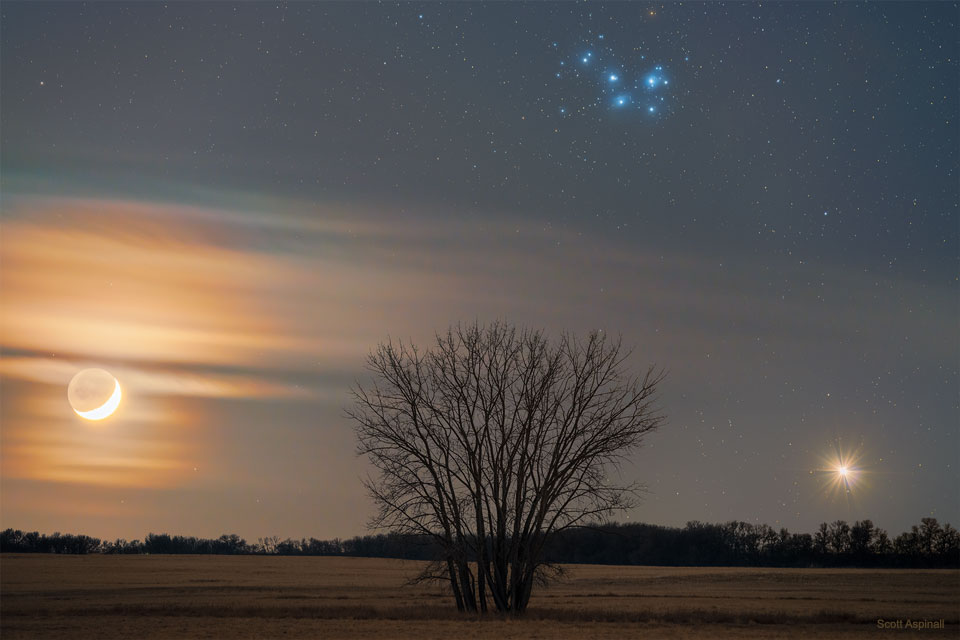2020 April 15
A Cosmic Triangle
Image Credit & Copyright: Scott Aspinall
Explanation: It was an astronomical triple play. Setting on the left, just after sunset near the end of last month, was our Moon — showing a bright crescent phase. Setting on the right was Venus, the brightest planet in the evening sky last month — and this month, too. With a small telescope, you could tell that Venus’ phase was half, meaning that only half of the planet, as visible from Earth, was exposed to direct sunlight and brightly lit. High above and much further in the distance was the Pleiades star cluster. Although the Moon and Venus move with respect to the background stars, the Pleiades do not — because they are background stars. In the beginning of this month, Venus appeared to move right in front of the Pleiades, a rare event that happens only once every eight years. The featured image captured this cosmic triangle with a series of exposures taken from the same camera over 70 minutes near Avonlea, Saskatchewan, Canada. The positions of the celestial objects was predicted. The only thing unpredicted was the existence of the foreground tree — and the astrophotographer is still unsure what type of tree that is.
Tomorrow’s picture: open space
天体三角
图像提供与版权:Scott Aspinall
说明:这是个天体三重奏。在上个月底日落后西沈的左侧天体,是带着明亮蛾眉相的月亮。在它右侧一同向西滑落的,是上个月和这个月夜空中最明亮的行星-金星。如果透过小望远镜观察,将会发现金星带着弦相,从地球看出去,靠太阳的那半边在阳光直射下非常明亮。高悬在视野上方远处的天体,则是美丽的昴宿星团。月亮和金星相对于背景恒星会移动,而昴宿星团则不会,因为它本身就背景恒星的一部分。在这个月初,金星看似穿过昴宿星团的前方,带来8年才得一见的天文景观。组合成这幅天体三角影像的序列照片,是在70分钟期间,由一部位在加拿大·萨斯喀彻温省·Avonlea村附近的相机所拍摄。这些天体在天空的位置,事先即可预测。影像中唯一没预料到的,是这颗位在前景的树,而且摄影者至今仍无法确定此树的树种为何。
明日的图片:open space







